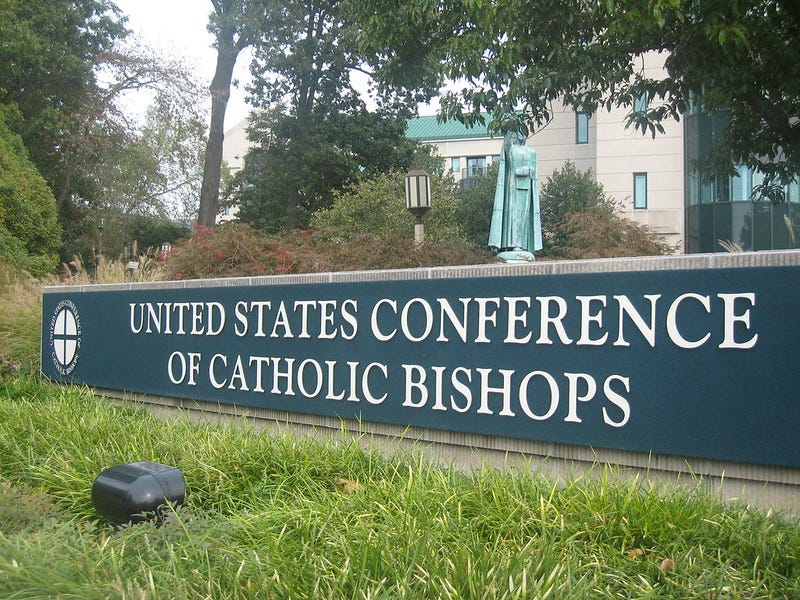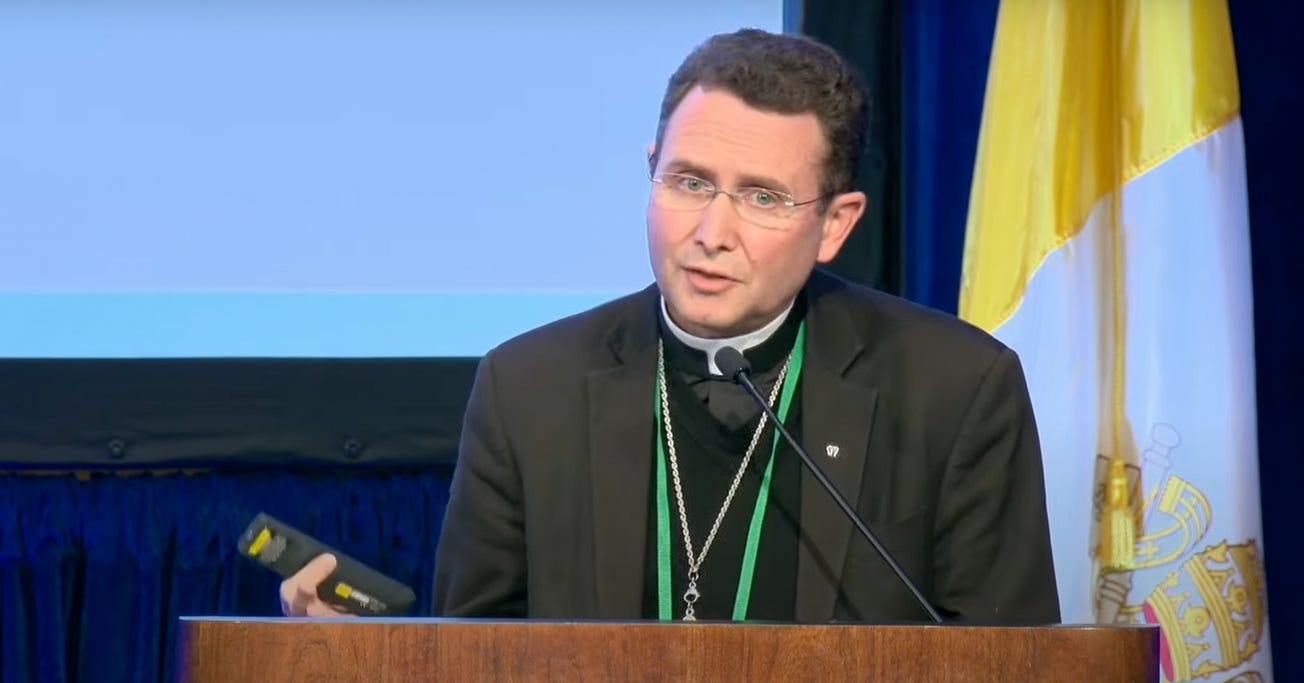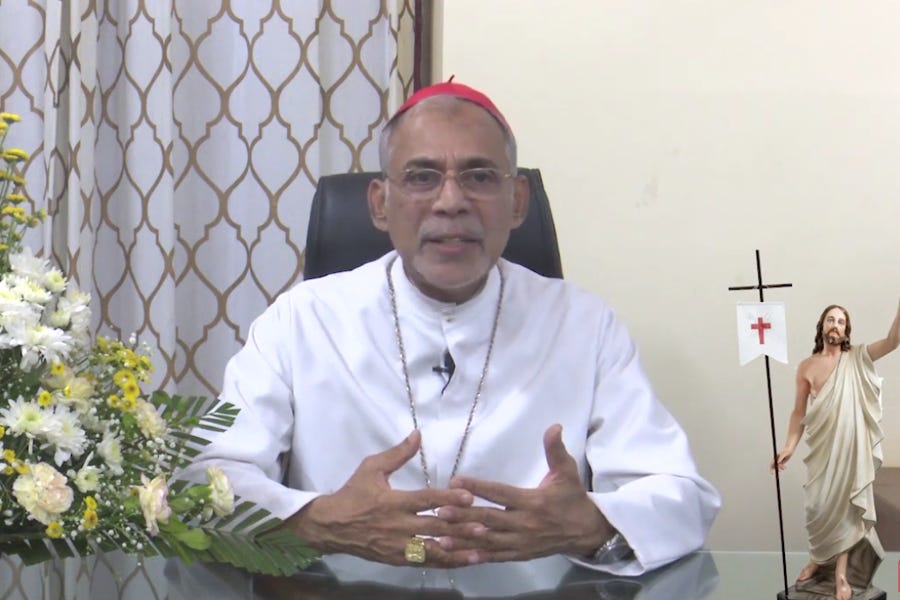Amid dueling statements from U.S. bishops Wednesday on the inauguration of President Joe Biden, the United States Conference of Catholic Bishops has become a topic of conversation among many Catholics.
While many people have heard of the USCCB, not everyone knows much about what a bishops’ conference is actually for, and what it does. The Pillar answers your questions.

So, what is a bishops’ conference?
A conference of bishops is a grouping of all the bishops in a region or territory, who are empowered to make a limited number of decisions regarding policy for the whole region, and who are also encouraged to develop projects, initiatives, or apostolates together, if they judge that to be in interests of the Church.
Conferences of bishops are established by the pope, and generally, but not always, follow the boundaries of a country. In some areas of the world, a conference of bishops might include bishops of more than one country.
The bishops’ conference of Ireland, for example, includes the bishops of both the Republic of Ireland and those from Northern Ireland. And the Scandinavian countries of Denmark, Finland, Iceland, Norway, and Sweden constitute one episcopal conference.
A bishops’ conference does not always include all the bishops of a particular country either. For example, although Puerto Rico is a U.S. territory and its citizens are U.S. citizens, Puerto Rico has its own conference of bishops.
Is the bishops’ conference in authority over the bishops in the country?
No. Each diocesan bishop is responsible for the leadership of his diocese, and each is accountable to the pope.
However, the bishops’ conference is empowered to make binding norms (called particular law) for its territory — but only in very limited circumstances defined by the Code of Canon Law.
A bishops’ conference can make rules setting the age for confirmation, setting the rules about what kind of clothes priests and deacons should wear, setting rules about fasting and abstinence, and setting certain financial and administrative standards. The binding rules made by the U.S. bishops’ conference can be seen here.
Each binding norm passed by the bishops’ conference must be reviewed by the Vatican before it can take effect.
The Vatican can also authorize conferences to make policy on certain issues, as it did in 2002, when the U.S. bishops wrote the Essential Norms for Diocesan/ Eparchial Policies Dealing with Allegations of Sexual Abuse of Minors by Priests or Deacons.
Specially authorized policies must also be recognized by the Vatican before they can take effect.
So bishops’ conferences exist just to make a few rules?
No. In addition to that function, they exist to help the bishops of an area exercise collegiality, or fraternity, in their ministry.
“The unity of the Episcopacy is one of the constitutive elements of the unity of the Church,” Pope St. John Paul II wrote in a 1988 letter on episcopal conferences. The pope urged that episcopal conferences could be an expression and particular application of that unity.
There is, the pope taught, a theological richness to acting, discerning, and teaching in union with other bishops, even while he added that bishops don’t surrender or lose their authority and responsibility for leadership because they belong to a conference of bishops.
In practice, the work of bishops’ conferences varies considerably around the globe. But most bishops’ conferences have regular opportunities for bishops to discuss broad thematic issues, most make efforts to issue teaching documents and provide ministry resources to dioceses, and most engage with lobbying of some kind with civil governments.
The U.S. bishops’ conference does all of those things.
Has the Church always had episcopal conferences?
No. Bishops of different nations started to form conferences in the late nineteenth century. The Second Vatican Council made mention of them, and their role was more concretely defined by the 1983 Code of Canon Law.
Christus Dominus, the Vatican II decree on the life and ministry of bishops, taught that: “Episcopal conferences already established in many nations-have furnished outstanding proofs of a more fruitful apostolate. Therefore, this sacred synod considers it to be supremely fitting that everywhere bishops belonging to the same nation or region form an association which would meet at fixed times. Thus, when the insights of prudence and experience have been shared and views exchanged, there will emerge a holy union of energies in the service of the common good of the churches.”
The Code of Canon Law says that: “A conference of bishops, a permanent institution, is a group of bishops of some nation or certain territory who jointly exercise certain pastoral functions for the Christian faithful of their territory in order to promote the greater good which the Church offers to humanity, especially through forms and programs of the apostolate fittingly adapted to the circumstances of time and place, according to the norm of law.”
Because conferences of bishops are relatively new institutions in the life of the Church, some of their particulars are still being worked out. Pope Francis has encouraged greater use of episcopal conferences for local collaboration, and many conferences have taken seriously that encouragement.
When was the USCCB founded?
The USCCB is an amalgamation of two institutions. It began in 1917, with the National Catholic War Council, through which bishops gathered to raise money and provide spiritual care for Catholics fighting in World War I. That group became the National Catholic Welfare Council, which was renamed in 1992 the National Catholic Welfare Conference, which organized the bishops on social and political issues.
In 1966, following the call of the Second Vatican Council, two distinct entities were founded. The United States Catholic Conference focused on political lobbying and social issues. The National Conference of Catholic Bishops focused on internal Church matters. In 2001, the two entities merged, forming the United States Conference of Catholic Bishops.




